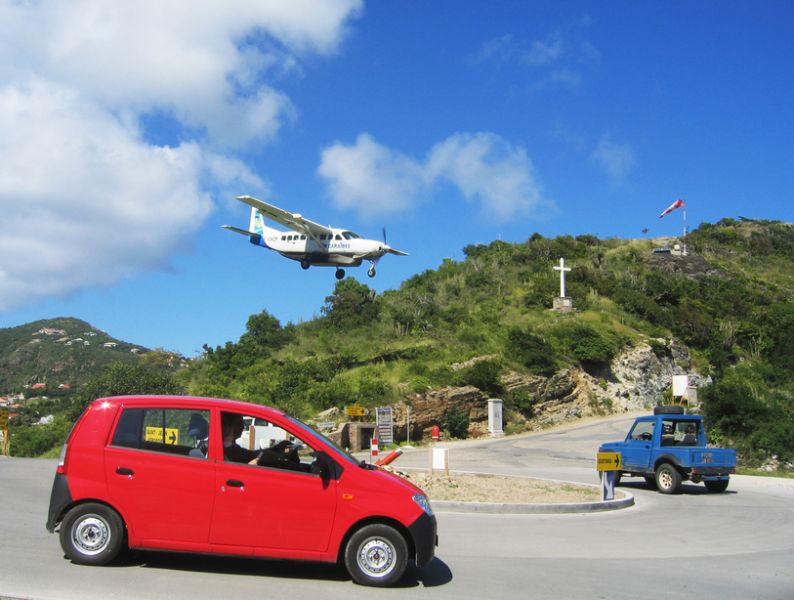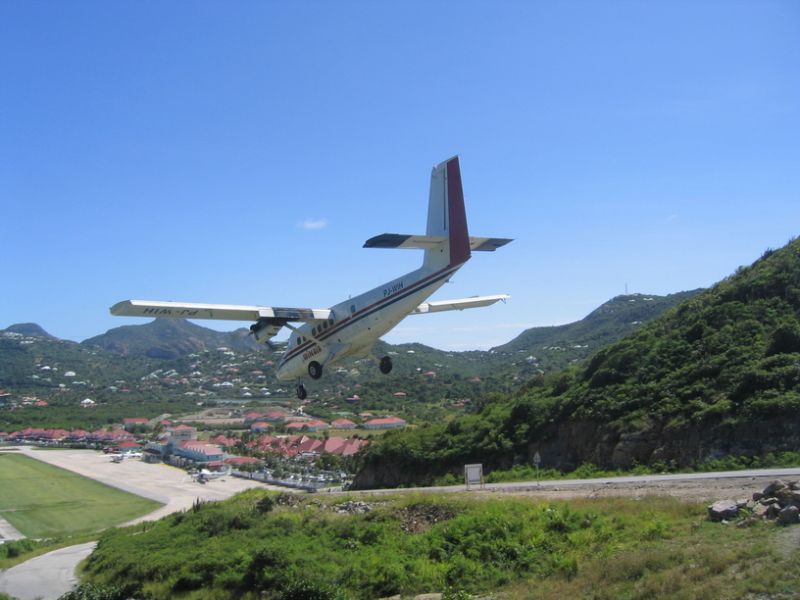TO4K Team will be active from Saint Barthelemy Island, IOTA NA - 146, in CQ WW DX SSB Contest, 25 - 26 October 2025.
Team - M5RIC, GW4XUM, G3NKC, G4CLA.
Recent DX Spots TO4K
TO4K Log search They will operate in MO Category.
QSL via LOTW.
Before and after contest they will be active as FJ/M5RIC, FJ/GW4XUM, FJ/G3NKC, FJ/G4CLA.
Previous activity:
Martin G4XUM, Rich M5RIC, Stewart GM4AFF, Kelly N0VD and possibly others will be active from Saint Barthelemy Island (IOTA NA-146) 20 - 27 October 2015 as FJ/G4XUM, FJ/M5RIC, FJ/GM4AFF, FJ/N0VD.
They will operate on HF Bands and will be active also in CQ WW DX SSB Contest 24 - 25 October 2015 as TO4K in Multi 2 Category.
QSL information:
TO4K via G3NKC.
FJ/M5RIC via M0OXO.
QSOs will count for DIFO FJ-001, WLOTA 0377.
Saint Barthélemy, the star island of the Antilles
Saint Barthélemy is an overseas collectivity of France, lost in the north of the West Indies among the Lesser Antilles. What appears to be an unremarkable volcanic island, long forgotten even by its own country, has now become the dream destination of millions. It is a symbol of wealth and high social status. For almost 70 years, the cream of society has been gathering on the island during the winter to enjoy a luxurious vacation in peace and seclusion.

Geography and climate of Saint Barthélemy
Saint Barthélemy is essentially a small archipelago. A large island is surrounded by a picturesque scattering of tiny islets: Chevre, Coco, Fourch, Frégate, Tortue, Le Boulanger, Le Grenadine, Pointe de Sucré, Pélée, Petite-Jean, and Tok Vert. The total area of Saint Barthélemy and the surrounding atolls is 24 km2. Geographically, the island is located between Saint Martin (25 km to the east), Guadeloupe (200 km to the west), and the islands of Saint Kitts and Nevis (50 km to the north).
The island is hilly and not very high. The most prominent peak is Morne du Vite, at 286 meters. One of the few flat areas in Saint Barth is the runway of the local airport, which is only 640 meters long. This is where tourists arrive on “cukurizniki” from Saint Martin.
The island consists of dry, infertile volcanic rock. Agriculture is basically impossible here due to the lack of fresh water. There are no rivers or streams on Saint Barthélemy. Drinking water is imported, obtained by desalination of seawater or collected during rainfall. Calls to conserve this precious and rare resource can be found everywhere on the island, from small grocery stores to the luxurious villas of five-star hotels.
Saint Barthélemy has a tropical maritime climate, with an average annual temperature of 25–30 °C and moderate humidity, well regulated by trade winds. As everywhere in the Caribbean, there are two seasons:
- December to April is the “dry” season. This is the best time to visit the Lesser Antilles.
- May to November is the “rainy” season. Locals call this period “winter hibernation” because many hotels, restaurants, and boutiques close.
The hurricane season is in September, when the island becomes almost deserted. Even the locals try to leave for a safer place, preferably to the mainland to stay with relatives.

The poorest island in the Caribbean
This small, hilly island was discovered by Christopher Columbus in 1493 during his second voyage. A quick glance at the terrain was enough for the legendary navigator to dismiss his discovery as useless, name it after his brother Bartolomeo, and continue on his way to explore new lands.
Spanish colonizers were in no hurry to come to the island. Only the well-protected natural harbor of Saint Barthélemy prompted the French in the mid-17th century to take the unclaimed property from the Spanish. Some settlers tried to grow indigo and cotton, while others were content with raising goats, fishing, and harvesting salt. The life of the first islanders was far from rosy. France quickly lost interest in them and in 1784 handed them over to Sweden in exchange for access to warehouses in the strategically important port of Gothenburg.
The Scandinavians made Saint Barthélemy a free port, renamed the capital Gustavia in honor of the late King Gustav III, and established successful trade. For several decades, the island prospered. But a series of natural disasters, the transfer of trade to the Virgin Islands, and the end of the sailing fleet marked the end of Saint Barth's first golden age. Without hesitation, the Swedes returned the unprofitable territories to France in 1878, after a formal referendum.
The Rockefellers in the modern history of Saint Barth
The second French era began no better than the first: Saint Barthélemy was just as openly ignored. A miracle happened in 1957. David Rockefeller, sailing between the Antilles, fell under the spell of Colombie Bay in the northwestern part of the island. Two large granite rocks created a natural belvedere for a crescent of pristine sandy beach lapped by azure waters. A small paradise—everyone's dream. Rockefeller made it his reality.
The banker bought two plots of land (the entire peninsula forming the bay) and built a luxurious modernist villa. Other wealthy people from around the world followed in the billionaire's footsteps. Rothschild, Ford, Kennedy, Howard Hughes, Greta Garbo, Nureyev, and Baryshnikov loved to spend their vacations in this hidden paradise. Since 1960, Saint Barthélemy has acquired the unofficial status of a resort for the elite.
Years later, the island has not lost its appeal to the powerful and influential. Luxurious hotels and residences have sprung up on the hillsides. Movie stars, politicians, oil magnates, artists, and members of royal families come to Saint Barth to enjoy priceless privacy.
Russian travelers, free from material concerns, have also fallen in love with this lost island in the Caribbean. Roman Abramovich introduced Saint Barthélemy to his compatriots. In September 2009, the oligarch purchased 70 acres of land in Governor's Bay with luxurious bungalows, tennis courts, and swimming pools for a staggering $90 million. The deal is still considered the largest in the Caribbean region.

Saint Barthélemy and Hurricane Irma
In early September 2017, Hurricane Irma struck the island. Unlike neighboring Saint Martin, there were no casualties, but the damage to insured property alone amounted to nearly one billion euros. Hotels, residential buildings, high-voltage power lines, roads, and the Swedish embankment were destroyed by winds and waves.
But the island recovered surprisingly quickly. Thanks to the concerted efforts of the local population, roads were cleared, serious debris was removed, and telephone and internet services were restored. Within a month, some hotels and restaurants had fully resumed operations to serve their high-end (in every sense of the word) guests.
The 2017–2018 Christmas season was not as bad as local authorities had feared from an economic point of view. The final reconstruction work on luxury hotels and private homes was completed by December 2018. New attractions have appeared in Saint Barthélemy, including the completely renovated capital of Gustavia and unique hotel complexes.
The secret charm of Saint Barthélemy
For casual tourists who find themselves on the island out of curiosity or by happy chance, it remains a mystery why this place attracts millionaires. The beauty of this small archipelago cannot be compared to Bali or Capri, the vegetation is not particularly lush, and the white sand beaches are beautiful, but there are thousands of them in the Caribbean.
The main attractions of Saint Barthélemy are not to be found in its natural sights. Its small size and inaccessibility attract famous people from all over the world to the island. There are never any crowds of tourists here, so you won't find any enthusiastic fans on the beach or in restaurants. The lack of charter flights makes it difficult to get to Saint Barth. It is a place of seclusion and tranquility, which is particularly appreciated by public figures.

